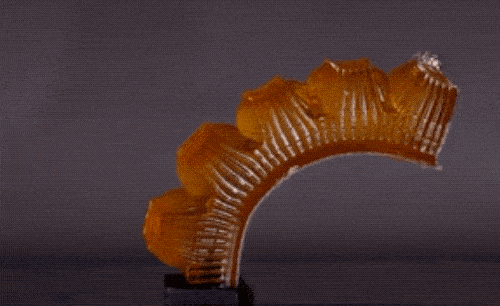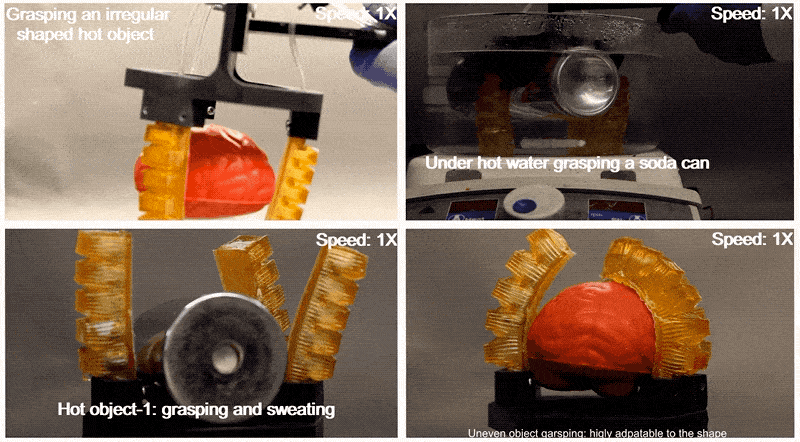
An experimental soft-bodied robotic hand maintains a stable temperature by releasing water through its tiny pores.
Although still a proof of concept, this bio-inspired approach could lead to a new class of robots that can operate for prolonged periods of time without overheating.
Sweaty robot palms
Robots and mechanical machines, in general, face important thermoregulation challenges, either because their components overheat or due to operating in hot environments like an assembly line or out in the field on a summer day. Cooling consumes a lot of energy, raising costs, while poor heat management can significantly impact the durability and performance of the machines.
Researchers at the Cornell University, Facebook Reality Labs, and the Center for Micro-BioRobotics in Pisa, addressed this challenge by looking at nature for a solution — the cooling power of perspiration naturally stood out.
“We believe [this] is a basic building block of a general purpose, adaptive, and enduring robot,” said Robert Shepherd, associate professor of Cornell’s Sibley School of Mechanical and Aerospace Engineering and co-author of the research,
When our bodies heat up, our millions of glands across our skin produce sweat — mostly water with a little bit of potassium, salt, and a few other minerals. Humans have the most efficient sweating system that we know of — we’re more of an exception in that we rely on secreting water on our skin to stay cool. Most furry mammals regulate their body temperature through panting while other animals like ectotherms — lizards, amphibians, and insects — have evolved other behaviors that help keep them cool.
Sweating enabled humans to march all day, even on hot summer days when most predators are out in the shade cooling off. So, in many ways, sweating has been a secret weapon that helped us survive and thrive across the world, in many different climates.
It makes sense to model some of our machines after this biological mechanism.
“It turns out that the ability to perspire is one of the most remarkable features of humans,” said Thomas Wallin, an engineer at Facebook Reality Labs and co-author of the new study. “We’re not the fastest animals, but early humans found success as persistent hunters. The combination of sweating, relative hairlessness, and an upright bipedal gait enabled us to physically exhaust our prey over prolonged chases.”

Wallin and colleagues designed a balloon-like robot fitted with pores that allow water to slowly ooze out — but only once the “body” temperature reaches a certain threshold. In order to make the hand-shaped robot respond to temperature, the researchers employed a hydrogel material called poly-N-isopropylacrylamide (PNIPAm). This material reacts to temperature passively, without the need for sensors or additional electronic components.
At 30 degrees Celsius (86 degrees Fahrenheit), the micropores in the soft robot’s top layer stay closed. Beyond this temperature, the pores expand, allowing pressurized fluid to leak — the robot sweats.
Experiments during which the robot was exposed to wind from a fan showed that the cooling rate was six times better than non-sweating machines. In fact, the thermoregulatory performance was even better than humans and horses (the other animal that sweats, although quite differently than humans do; horses still mainly rely on panting to cool off).
Such soft robots, however, aren’t well suited for all types of applications. The dripping solution makes the soft actuators slippery, making grasping challenging. The robot also runs out of water eventually and a refillable water tank isn’t always an option.
It’s still a very interesting proof of concept that shows you don’t need huge heat sinks and cooling fans to keep a robot’s temperature at optimal levels.
The findings appeared in the journal Science Robotics.


